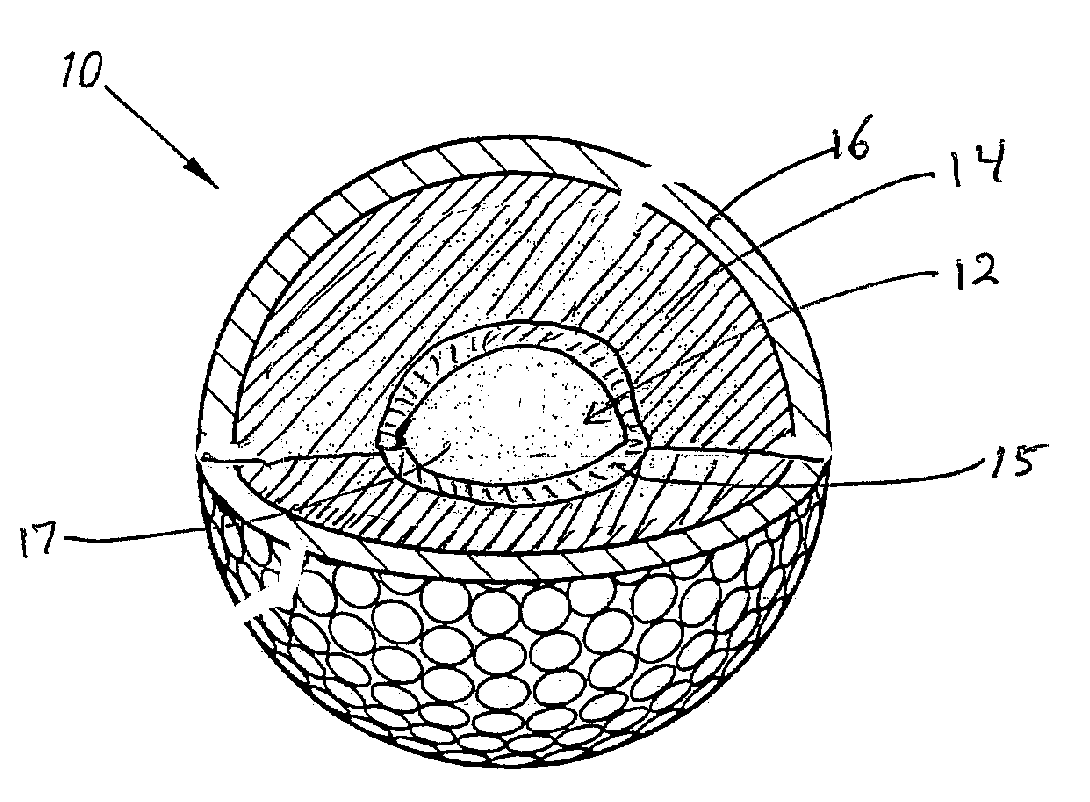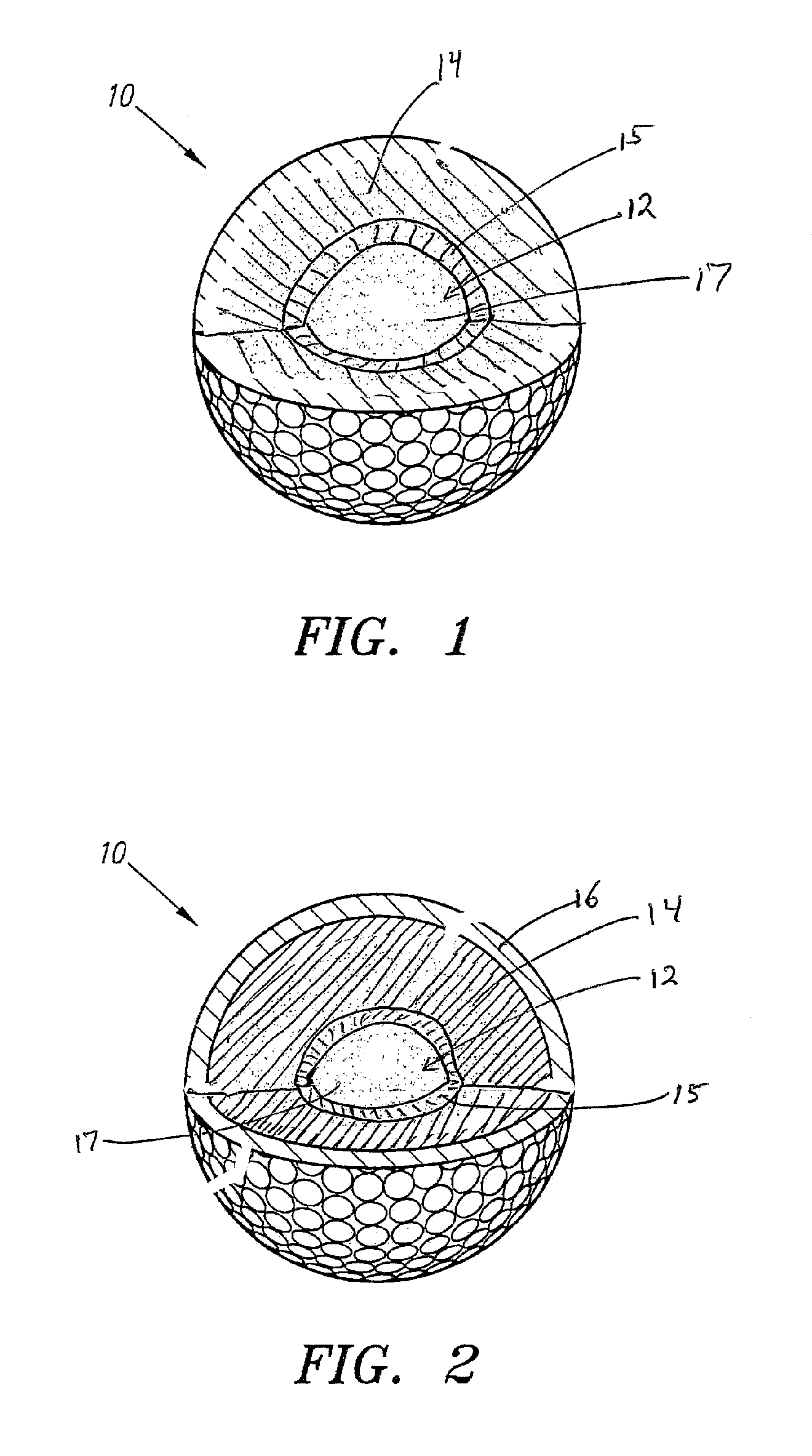Golf ball with metal core
a golf ball and metal core technology, applied in the field of golf balls, can solve the problems of difficult painting, material blackening, and insufficient achieve the effects of increasing the mass of golf balls, good cor, and sufficient mass
- Summary
- Abstract
- Description
- Claims
- Application Information
AI Technical Summary
Benefits of technology
Problems solved by technology
Method used
Image
Examples
Embodiment Construction
[0016]As shown in FIG. 1, a golf ball of the present invention is generally designated 10. The golf ball 10 of FIG. 1 preferably has a metal hollow core 12 and cover layer 14 composed of a highly neutralized copolymer or terpolymer having a fatty acid based moiety.
[0017]The surface geometry of the golf ball 10 is preferably a conventional dimple pattern such as disclosed in U.S. Pat. No. 6,224,499 for a Golf Ball With Multiple Sets Of Dimples, which pertinent parts are hereby incorporated by reference. Alternatively, the surface geometry of the golf ball 10 has a non-dimple surface geometry such as disclosed in U.S. Pat. No. 6,290,615, filed on Nov. 18, 1999 for A Golf Ball Having A Tubular Lattice Pattern, which pertinent parts are hereby incorporated by reference.
[0018]The golf ball 10 is preferably finished with either a very thin (microns in thickness) single top coating, or is painted with one or more base coats of paint, typically white, before application of a clear coat. The...
PUM
| Property | Measurement | Unit |
|---|---|---|
| thickness | aaaaa | aaaaa |
| diameter | aaaaa | aaaaa |
| thickness | aaaaa | aaaaa |
Abstract
Description
Claims
Application Information
 Login to View More
Login to View More - R&D
- Intellectual Property
- Life Sciences
- Materials
- Tech Scout
- Unparalleled Data Quality
- Higher Quality Content
- 60% Fewer Hallucinations
Browse by: Latest US Patents, China's latest patents, Technical Efficacy Thesaurus, Application Domain, Technology Topic, Popular Technical Reports.
© 2025 PatSnap. All rights reserved.Legal|Privacy policy|Modern Slavery Act Transparency Statement|Sitemap|About US| Contact US: help@patsnap.com


